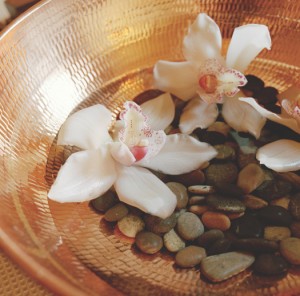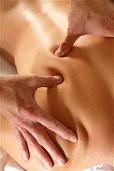Varieties and Techniques

There are over a hundred types of massage therapies found all over the world. Many are variations of a particular approach that is developed with its own “brand name.” Most of these techniques can be grouped into 5 categories namely: Swedish massage, Therapeutic massage, Oriental massage, Sports massage, and other special forms of massage.
Integrative Method
There are approaches and combinations of approaches that do not fit neatly into any specific categories of massage. What makes integrative massage unique is that it combines techniques from various disciplines that allow for a full range of treatment. This highly integrated therapy is designed to provide the body with a deep sense of well being, balance, and pain relief. It touches on all forms of therapies including muscle and bodywork, pain and tension reduction, relaxation, stretching movements, and energy balancing and healing. It provides a holistic approach to good health which includes the healing and balancing of the mind, body and spirit.
During a typical session the client is individually assessed by the therapist to determine their specific needs. Once the therapist determines your specific needs then the appropriate therapeutic methods can be applied. The approach is designed to help reduce the stresses of everyday life through the various massage techniques. It is beneficial to those who have muscle aches and pains, have been injured, need to relax and reduce stress, or simply want to stay healthy and peaceful. Integrative therapy enables you to experience many of the techniques and therapies we offer.
Neuromuscular Therapy
This comprehensive program of soft-tissue manipulation balances the body’s central nervous system with the musculoskeletal system. Based on neurological laws that explain how the central nervous system initiates and maintains pain, the goal is to help relieve the pain and dysfunction by understanding and alleviating the underlying cause. Neuromuscular therapy can help individuals who experience distortion and biomechanical dysfunction, which is often a symptom of a deeper problem. It is also used to locate and release spasms and hypercontraction in the tissue, eliminate trigger points that cause referred pain, rebuild the strength of injured tissues, assist venous and lymphatic flow, and restore postural alignment, proper biomechanics, and flexibility to the tissues. The American Academy of Pain Management recognizes this form of massage therapy as an effective treatment for back pain caused by soft tissue injury (such as a muscle strain).
Swedish Massage
One of the most commonly taught and well-known massage techniques, Swedish massage is a vigorous system of treatment designed to energize the body by stimulating circulation. Five basic strokes, all flowing toward the heart, are used to manipulate the soft tissues of the body. The disrobed client is covered by a sheet, with only the area being worked on exposed. Therapists use a combination of kneading, rolling, vibrational, percussive, and tapping movements, with the application of oil, to reduce friction on the skin. Its active and passive movements of the joints promote general relaxation, improve circulation and range of motion, and relieve muscle tension. The many benefits of Swedish massage may include dissolution of scar tissue adhesions, and improved circulation, which may speed healing and reduce swelling from injury.
Reflexology
Based on an ancient Chinese therapy, reflexology involves manipulation of specific reflex areas in the foot, hands, and ears that correspond to other parts of the body. Sometimes referred to as zone therapy, this bodywork involves application of pressure to these reflex zones to stimulate body organs and relieve areas of congestion. Similar to acupressure principles, reflexology works with the body’s energy flow to stimulate self-healing and maintain balance in physical function. This technique is used to reduce pain, increase relaxation, and stimulate circulation of blood and lymphatic fluids. It is especially useful in stress-related illness and emotional disorders. Reflexology is also convenient in cases where an area of the body is traumatized or diseased to the extent that direct manipulation is not appropriate.
Deep Tissue Massage
Techniques that utilize deep-tissue/deep-muscle massage are administered to affect the sub-layer of musculature and fascia to release chronic patterns of muscular tension using slow strokes, direct pressure, or friction. These techniques require advanced training and a thorough understanding of anatomy and physiology. The muscles must be relaxed in order to effectively perform deep-tissue massage, otherwise tight surface muscles prevent the practitioner from reaching deeper musculature. It helps with chronic muscular pain and injury rehabilitation and reduces inflammation-related pain caused by arthritis and tendinitis. It is generally integrated with other massage techniques.
Sports Massage
Sports Massage uses techniques similar to Swedish and deep tissue along with various stretching techniques more specifically adapted to deal with the needs of athletes and the effects of athletic performance on the body. Sports massage is used before or after events, as part of an athlete’s training regimen, and to promote healing from injuries.
Manual Lymph Drainage
The strokes applied in manual lymph drainage are intended to stimulate the movement of the lymphatic fluids in order to assist the body in cleansing. This is a gentle, rhythmical technique that cleanses the connective tissue of inflammatory materials and toxins, enhances the activity of the immune system, reduces pain, and lowers the activity of the sympathetic nervous system. The most widely taught and generally accepted form of this technique was created by Dr. Vodder of Austria and requires advanced training and precise movements.
Information from massagetherapy.com




